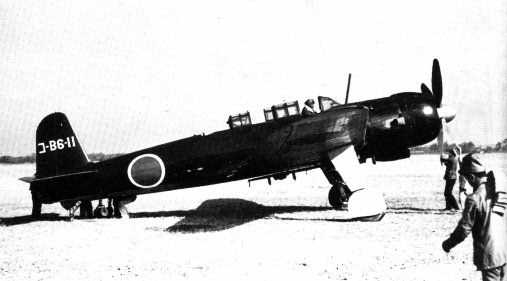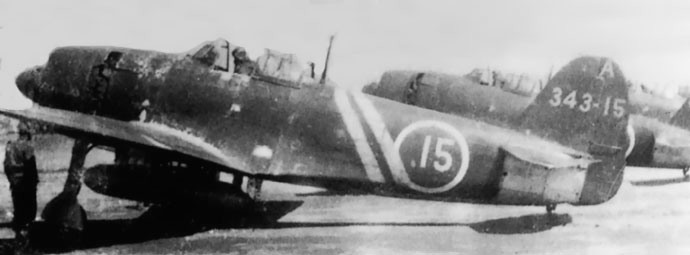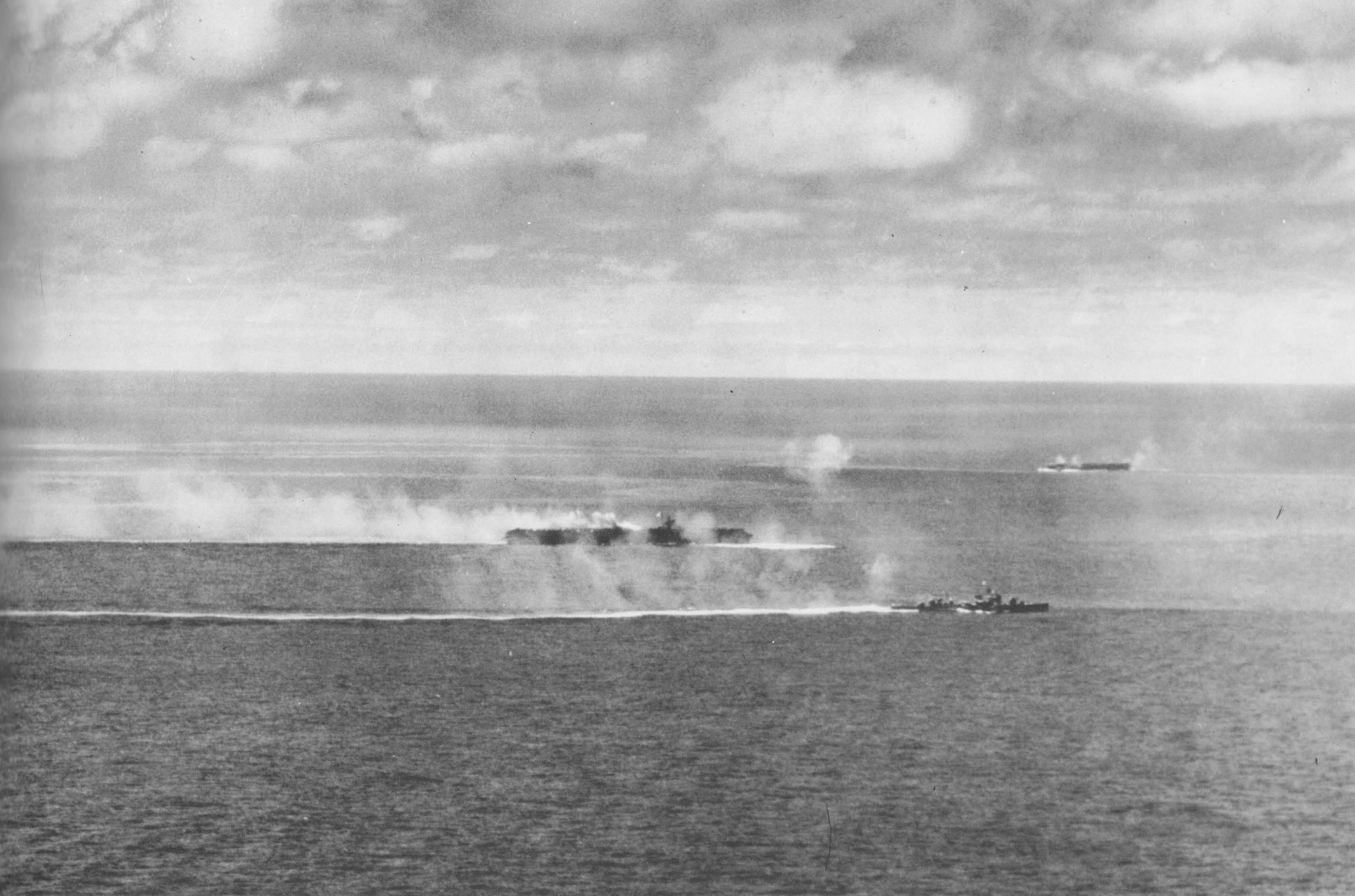|
601st Naval Air Group
The was a carrier air group (later converted to airbase garrison unit) of the Imperial Japanese Navy (IJN) during the Pacific campaign of World War II. Structure *Higher unit ** 3rd Fleet (15 February 1944–9 July 1944) ** 1st Carrier Division (10 July 1944–9 February 1945) ** 3rd Air Fleet (10 February 1945–postwar.) *Lower unit **161st Fighter Squadron (10 July 1944–15 November 1944) **162nd Fighter Squadron (10 July 1944–15 November 1944) **308th Fighter Squadron (20 February 1945–postwar.) **310th Fighter Squadron (20 February 1945–postwar.) **402nd Fighter Squadron (5 March 1945–20 April 1945) **1st Attack Squadron (20 February 1945–postwar.) **161st Attack Squadron (10 July 1944–15 November 1944) **254th Attack Squadron (20 February 1945–5 March 1945) **262nd Attack Squadron (10 July 1944–14 November 1944) **61st Reconnaissance Squadron (10 July 1944–15 November 1944) Commanding officers *Cdr. / ... [...More Info...] [...Related Items...] OR: [Wikipedia] [Google] [Baidu] |
Nakajima B6N
The Nakajima B6N ''Tenzan'' ( ja, 中島 B6N 天山, "Heavenly Mountain", Allied reporting name: "Jill") was the Imperial Japanese Navy's standard carrier-borne torpedo bomber during the final years of World War II and the successor to the B5N "Kate". Due to its protracted development, a shortage of experienced pilots and the United States Navy's achievement of air superiority by the time of its introduction, the B6N was never able to fully demonstrate its combat potential. Design and development The B5N carrier torpedo-bomber's weaknesses had shown themselves early in the Second Sino-Japanese War and, as well as updating that aircraft, the Imperial Japanese Navy began seeking a faster longer-ranged replacement. In December 1939 it issued a specification to Nakajima for a Navy Experimental ''14-Shi'' Carrier Attack Aircraft capable of carrying the same external weapons load as the B5N. The new plane was to carry a crew of three (pilot, navigator/bombardier and radio operator/g ... [...More Info...] [...Related Items...] OR: [Wikipedia] [Google] [Baidu] |
Yokosuka D4Y
The is a two-seat carrier-based dive bomber developed by the Yokosuka Naval Air Technical Arsenal and operated by the Imperial Japanese Navy from 1942 to 1945 during World War II. Development of the aircraft began in 1938. The first D4Y1 was complete in November 1940 and made its maiden flight at Yokosuka the following month. While the aircraft was originally conceived as a dive bomber, the D4Y was used in other roles including reconnaissance, night fighter and special attack (kamikaze). It made its combat debut as a reconnaissance aircraft when two pre-production D4Y1-Cs embarked aboard the Sōryū to take part in the Battle of Midway in 1942. It was not until March 1943 that it was accepted for use as a dive bomber. The early D4Y1 and D4Y2 featured the liquid-cooled Aichi Atsuta engine, a licensed version of the German Daimler-Benz DB 601, while the later D4Y3 and D4Y4 featured the Mitsubishi MK8P Kinsei radial engine. Like many other Japanese aircraft of the time, the D4Y ... [...More Info...] [...Related Items...] OR: [Wikipedia] [Google] [Baidu] |
National Archives Of Japan
The preserve Japanese government documents and historical records and make them available to the public. Although Japan's reverence for its unique history and art is well documented and illustrated by collections of art and documents, there is almost no archivist tradition. Before the creation of the National Archives, there was a scarcity of available public documents which preserve "grey-area" records, such as internal sources to show a process which informs the formation of a specific policy or the proceedings of various committee meetings. In accordance with the National Archives Law No.79 (1999), the core function of preserving "government documents and records of importance as historical materials" includes all material relating to (1) decision-making on important items of national policies, and (2) processes of deliberation, discussion, or consultation prior to reaching any decision-making, and the process of enforcing policies based on decisions made. The transfer of what ... [...More Info...] [...Related Items...] OR: [Wikipedia] [Google] [Baidu] |
Japan Center For Asian Historical Records
Japan ( ja, 日本, or , and formally , ''Nihonkoku'') is an island country in East Asia. It is situated in the northwest Pacific Ocean, and is bordered on the west by the Sea of Japan, while extending from the Sea of Okhotsk in the north toward the East China Sea, Philippine Sea, and Taiwan in the south. Japan is a part of the Ring of Fire, and spans an archipelago of 6852 islands covering ; the five main islands are Hokkaido, Honshu (the "mainland"), Shikoku, Kyushu, and Okinawa. Tokyo is the nation's capital and largest city, followed by Yokohama, Osaka, Nagoya, Sapporo, Fukuoka, Kobe, and Kyoto. Japan is the eleventh most populous country in the world, as well as one of the most densely populated and urbanized. About three-fourths of the country's terrain is mountainous, concentrating its population of 123.2 million on narrow coastal plains. Japan is divided into 47 administrative prefectures and eight traditional regions. The Greater Tokyo Area is the most po ... [...More Info...] [...Related Items...] OR: [Wikipedia] [Google] [Baidu] |
Gakken
is a Japanese publishing company founded in 1947 by Hideto Furuoka, which also produces educational toys. Their annual sales is reported at ¥ 90 billion ($789 million US). Gakken publishes educational books and magazines and produces other education-related products. For nursery school age children and their caretakers, they produce items such as child care and nursing guides. For school children, they publish text books, encyclopedias, and science books. Gakken also publishes educational magazines for high school students, as well as school guides for all levels. Gakken also provides products for playrooms, study rooms, computer rooms and science rooms. Gakken also publishes general family-oriented and gender-oriented magazines in sports, music, art, history, animation, cooking, and puzzles. History Gakken is perhaps originally known for producing Denshi blocks and packaging them within electronic toy kits such as the Gakken EX-System, as far back as the 1970s. One of ... [...More Info...] [...Related Items...] OR: [Wikipedia] [Google] [Baidu] |
Pacific War
The Pacific War, sometimes called the Asia–Pacific War, was the theater of World War II that was fought in Asia, the Pacific Ocean, the Indian Ocean, and Oceania. It was geographically the largest theater of the war, including the vast Pacific Ocean theater, the South West Pacific theater, the Second Sino-Japanese War, and the Soviet–Japanese War. The Second Sino-Japanese War between the Empire of Japan and the Republic of China had been in progress since 7 July 1937, with hostilities dating back as far as 19 September 1931 with the Japanese invasion of Manchuria. However, it is more widely accepted that the Pacific War itself began on 7 December (8 December Japanese time) 1941, when the Japanese simultaneously invaded Thailand, attacked the British colonies of Malaya, Singapore, and Hong Kong as well as the United States military and naval bases in Hawaii, Wake Island, Guam, and the Philippines. The Pacific War saw the Allies pitted against Japan, the la ... [...More Info...] [...Related Items...] OR: [Wikipedia] [Google] [Baidu] |
Kōkūtai
A ''Kōkūtai'' () was a term used by the Imperial Japanese Navy Air Service (IJNAS) to designate a military aviation unit, similar to the Air Groups in other air arms and services of the time. (''Group'' in the British Royal Air Force, ''Gruppe'' in the German Luftwaffe, ''Groupe'' in the French Armée de l'Air etc.) A Kōkūtai could be based at land or on board aircraft carriers and could contain up to hundreds of men and aircraft. For example, the famous 343 Kōkūtai was a land based fighter group while the 652nd Kōkūtai was a carrier-based bomber group. Kōkūtai were divided into smaller units called Hikōtai, which were the equivalent of a squadron. Kōkūtai were usually divided into three Hikōtai. In general, most pilots and aircrew in the Imperial Japanese Navy Air Service were non-commissioned officers. The word Kōkūtai is abbreviated with the abbreviation "Ku" (空). 343 Ku, for example, stands for 343 Kōkūtai. In the Imperial Japanese Army Air Service (IJA ... [...More Info...] [...Related Items...] OR: [Wikipedia] [Google] [Baidu] |
Japanese Aircraft Carrier Shōkaku
''Shōkaku'' ( ja, 翔鶴, "Soaring Crane") was the lead ship of her class of two aircraft carriers for the Imperial Japanese Navy (IJN) shortly before the Pacific War. Along with her sister ship , she took part in several key naval battles during the war, including the attack on Pearl Harbor, the Battle of the Coral Sea, and the Battle of the Santa Cruz Islands, before being torpedoed and sunk by the U.S. submarine at the Battle of the Philippine Sea. Design The ''Shōkaku''-class carriers were part of the same program that also included the s. No longer restricted by the provisions of the Washington Naval Treaty, which expired in December 1936, the Imperial Japanese Navy (IJN) was free to incorporate all those features they deemed most desirable in an aircraft carrier, namely high speed, a long radius of action, heavy protection and a large aircraft capacity. ''Shōkaku'' was laid down at Yokosuka Dockyard on 12 December 1937, launched on 1 June 1939, and commissioned on 8 ... [...More Info...] [...Related Items...] OR: [Wikipedia] [Google] [Baidu] |
Japanese Aircraft Carrier Zuikaku
''Zuikaku'' ( Japanese: 瑞鶴 "Auspicious Crane") was the second and last built for the Imperial Japanese Navy (IJN) shortly before the beginning of the Pacific War. Her aircraft took part in the attack on Pearl Harbor that formally brought the United States into the war, and she fought in several of the most important naval battles of the war, before being sunk during the Battle of Leyte Gulf.Zuikaku @ www.history.navy.mil ''Zuikaku'' was one of six carriers to participate in the Pearl Harbor attack and was the last of the six to be sunk in the war ( Akagi, Kaga, ... [...More Info...] [...Related Items...] OR: [Wikipedia] [Google] [Baidu] |
Air Raids On Japan
Air raids conducted by Allied forces on Japan during World War II caused extensive destruction to the country's cities and killed between 241,000 and 900,000 people. During the first years of the Pacific War these attacks were limited to the Doolittle Raid in April 1942 and small-scale raids on military positions in the Kuril Islands from mid-1943. Strategic bombing raids began in June 1944 and continued until the end of the war in August 1945. Allied naval and land-based tactical air units also attacked Japan during 1945. The United States military air campaign waged against Japan began in earnest in mid-1944 and intensified during the war's last months. While plans for attacks on Japan had been prepared prior to the Pacific War, these could not begin until the long-range B-29 Superfortress bomber was ready for combat. From June 1944 until January 1945, B-29s stationed in India staged through bases in China to make a series of nine raids on targets in western Japan, but thi ... [...More Info...] [...Related Items...] OR: [Wikipedia] [Google] [Baidu] |
Battle Of Okinawa
The , codenamed Operation Iceberg, was a major battle of the Pacific War fought on the island of Okinawa by United States Army (USA) and United States Marine Corps (USMC) forces against the Imperial Japanese Army (IJA). The initial invasion of Okinawa on 1 April 1945 was the largest amphibious assault in the Pacific Theater of World War II. The Kerama Islands surrounding Okinawa were preemptively captured on 26 March, (L-6) by the 77th Infantry Division. The 82-day battle lasted from 1 April until 22 June 1945. After a long campaign of island hopping, the Allies were planning to use Kadena Air Base on the large island of Okinawa as a base for Operation Downfall, the planned invasion of the Japanese home islands, away. The United States created the Tenth Army, a cross-branch force consisting of the U.S. Army 7th, 27th, 77th and 96th Infantry Divisions with the USMC 1st, 2nd, and 6th Marine Divisions, to fight on the island. The Tenth was unique in that it had its ow ... [...More Info...] [...Related Items...] OR: [Wikipedia] [Google] [Baidu] |
Battle Of Iwo Jima
The Battle of Iwo Jima (19 February – 26 March 1945) was a major battle in which the United States Marine Corps (USMC) and United States Navy (USN) landed on and eventually captured the island of Iwo Jima from the Imperial Japanese Army (IJA) during World War II. The American invasion, designated Operation Detachment, had the purpose of capturing the island with its two airfields: South Field and Central Field. The Japanese Army positions on the island were heavily fortified, with a dense network of bunkers, hidden artillery positions, and of tunnels. The American ground forces were supported by extensive naval artillery and had complete air supremacy provided by U.S. Navy and Marine Corps aviators throughout the battle. The five-week battle saw some of the fiercest and bloodiest fighting of the Pacific War. The Japanese combat deaths numbered three times the number of American deaths, but uniquely among Pacific War Marine battles, the American total casualties (dead a ... [...More Info...] [...Related Items...] OR: [Wikipedia] [Google] [Baidu] |







